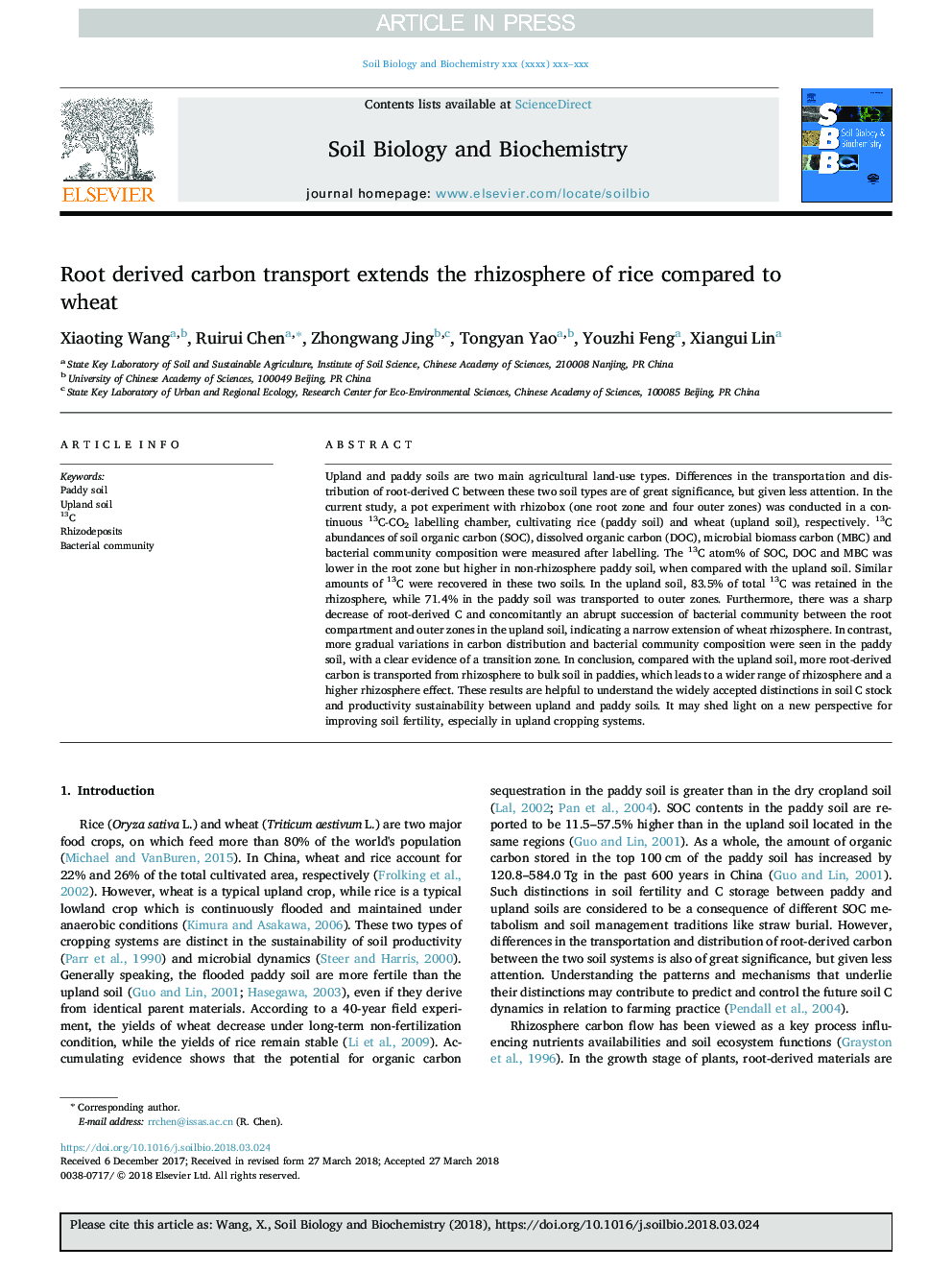| Article ID | Journal | Published Year | Pages | File Type |
|---|---|---|---|---|
| 8362737 | Soil Biology and Biochemistry | 2018 | 9 Pages |
Abstract
Upland and paddy soils are two main agricultural land-use types. Differences in the transportation and distribution of root-derived C between these two soil types are of great significance, but given less attention. In the current study, a pot experiment with rhizobox (one root zone and four outer zones) was conducted in a continuous 13C-CO2 labelling chamber, cultivating rice (paddy soil) and wheat (upland soil), respectively. 13C abundances of soil organic carbon (SOC), dissolved organic carbon (DOC), microbial biomass carbon (MBC) and bacterial community composition were measured after labelling. The 13C atom% of SOC, DOC and MBC was lower in the root zone but higher in non-rhizosphere paddy soil, when compared with the upland soil. Similar amounts of 13C were recovered in these two soils. In the upland soil, 83.5% of total 13C was retained in the rhizosphere, while 71.4% in the paddy soil was transported to outer zones. Furthermore, there was a sharp decrease of root-derived C and concomitantly an abrupt succession of bacterial community between the root compartment and outer zones in the upland soil, indicating a narrow extension of wheat rhizosphere. In contrast, more gradual variations in carbon distribution and bacterial community composition were seen in the paddy soil, with a clear evidence of a transition zone. In conclusion, compared with the upland soil, more root-derived carbon is transported from rhizosphere to bulk soil in paddies, which leads to a wider range of rhizosphere and a higher rhizosphere effect. These results are helpful to understand the widely accepted distinctions in soil C stock and productivity sustainability between upland and paddy soils. It may shed light on a new perspective for improving soil fertility, especially in upland cropping systems.
Related Topics
Life Sciences
Agricultural and Biological Sciences
Soil Science
Authors
Xiaoting Wang, Ruirui Chen, Zhongwang Jing, Tongyan Yao, Youzhi Feng, Xiangui Lin,
